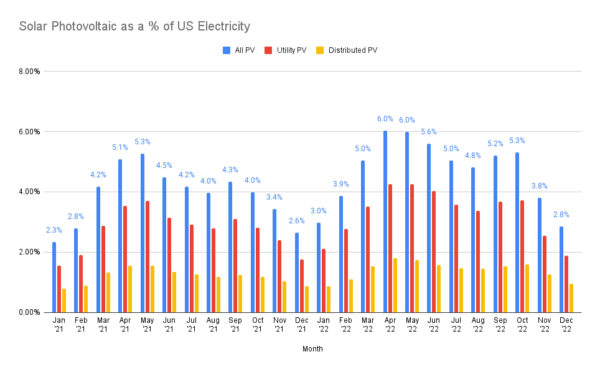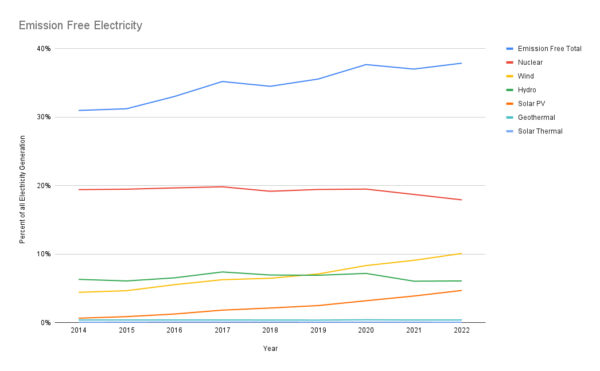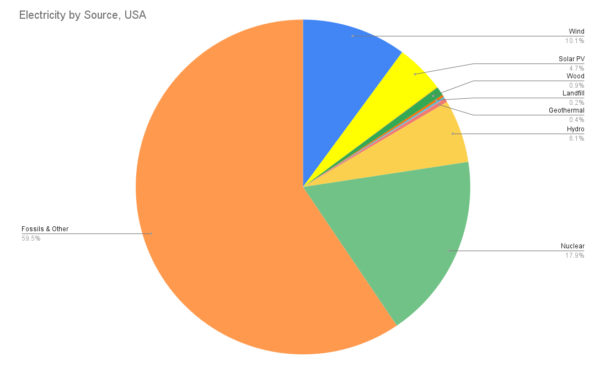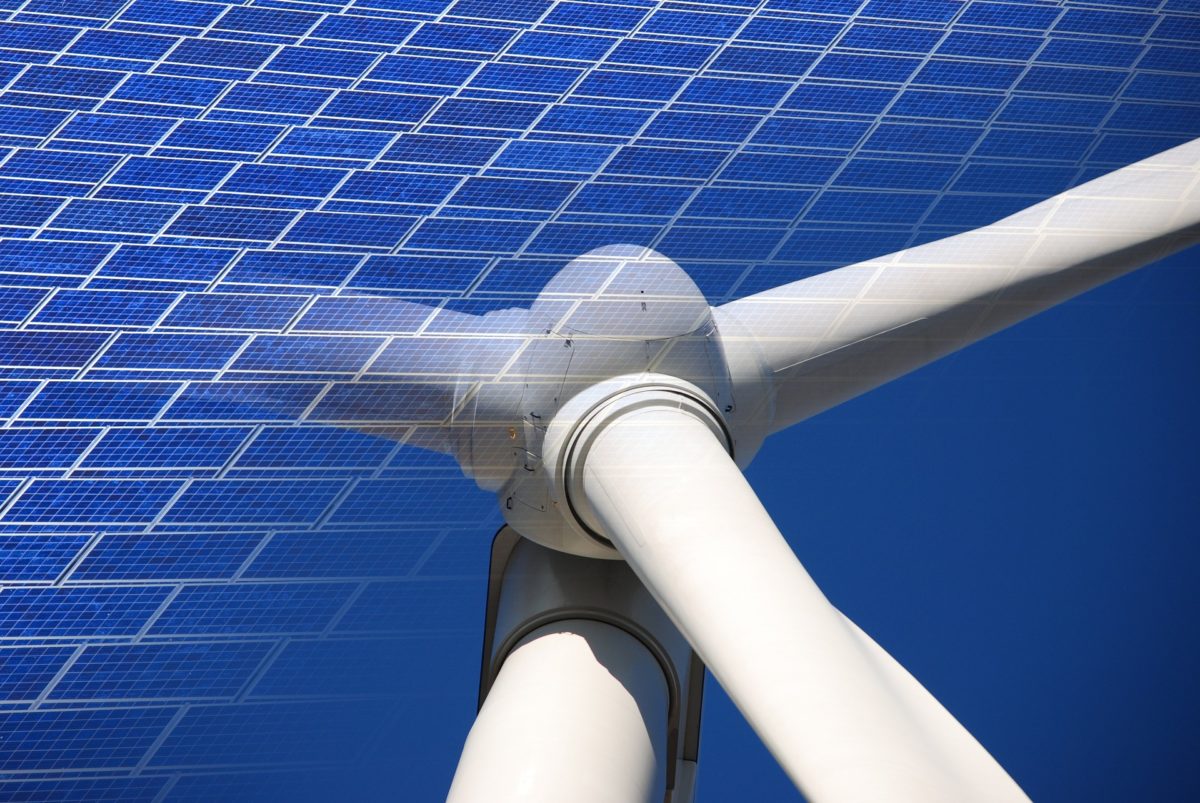In 2022, solar photovoltaics made up 4.7% of U.S. electricity generation, an increase of almost 21% over the 2021 total when solar produced 3.9% of US electricity. Total solar generation was up 25%, breaking through 200,000 GWh for the year.
The record deployment volumes of 2020 and 2021 are the main factors behind this increase. If it were not for ongoing solar panel import difficulties and general inflation, solar’s contribution to electricity generation might have reached 5% in 2022. The data was released by the Department of Energy’s Energy Information Administration (EIA) in their Electric Power Monthly. This release includes data from December 2022, as well as the rest of the data from 2022.

PV Intel
Solar as a percentage of monthly electricity generation ranged from a low of almost 3% in January, to just over 6% in April. April’s production marked a new monthly record for solar generation in the US.
Total generation of solar electricity peaked in July, at 21,708 GWh. Over the course of the year, solar production reached 202,256 GWh, and total U.S. electricity generation reached 4,303,980 GWh. Total US electricity generation increased by 3.5% over the 4,157,467 GWh produced in 2021.

PV Intel
In 2022, wind energy contributed 10.1% of the total electricity generated in the United States. Wind and solar together produced 14.8% of U.S. electricity in 2022, growing from the 13% recorded in 2021. In April, when solar power peaked at just over 6%, wind and solar power together reached a peak of slightly over 20%, a new monthly record for the two energy sources.
In total, emissions free energy sources such as wind, solar photovoltaic and thermal, nuclear, hydroelectric, and geothermal, accounted for 37.9% of the total electricity generated in the U.S. This value is barely higher than 2020’s 37.7% – but represents a return to growth after 2021 saw a decrease in emission free electricity to 37%.
Nuclear power was the most significant contributor to emission free electricity, making up a bit more than 45% of the total emissions free electricity. Wind energy ranked second at 26%, followed by hydroelectricity at 15%, and solar photovoltaic at 12%.

PV Intel
Emissions free electricity is a different summation than the EIA’s ‘Renewable Energy’ category. The Renewable Energy category also includes:
- Wood and Wood-Derived Fuels
- Landfill Gas
- Biogenic Municipal Solid Waste
- Other Waste Biomass
Nuclear produced 17.9% of the total U.S. electricity, a value that has generally stayed flat over the years. However, since nuclear facilities are being retired faster than new facilities are coming online, nuclear production has fallen in the past two years. After multiple long delays, we will probably see reactor three of the Vogtle nuclear facility come online in 2023. Reactor four is officially scheduled to come online later this year.
Hydroelectric production also declined in 2022, due to drought conditions in the southwestern United States. With rain and snow storms in California and the southwest, hydroelectricity generation may rebound in 2023.
This content is protected by copyright and may not be reused. If you want to cooperate with us and would like to reuse some of our content, please contact: editors@pv-magazine.com.








By submitting this form you agree to pv magazine using your data for the purposes of publishing your comment.
Your personal data will only be disclosed or otherwise transmitted to third parties for the purposes of spam filtering or if this is necessary for technical maintenance of the website. Any other transfer to third parties will not take place unless this is justified on the basis of applicable data protection regulations or if pv magazine is legally obliged to do so.
You may revoke this consent at any time with effect for the future, in which case your personal data will be deleted immediately. Otherwise, your data will be deleted if pv magazine has processed your request or the purpose of data storage is fulfilled.
Further information on data privacy can be found in our Data Protection Policy.